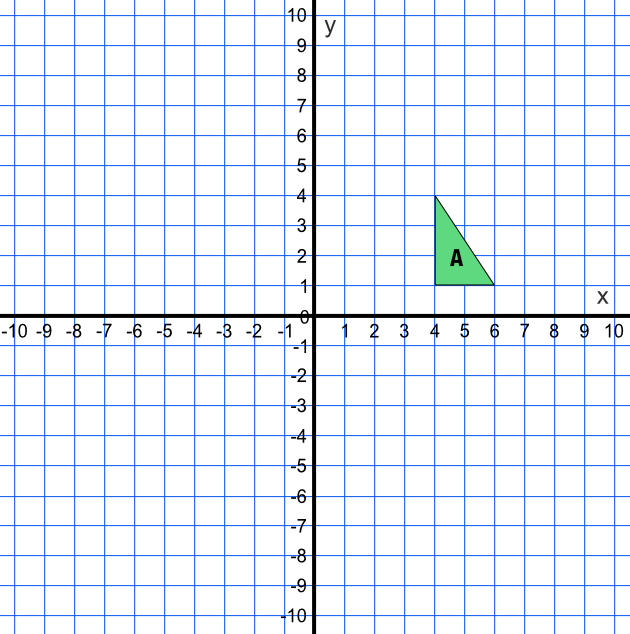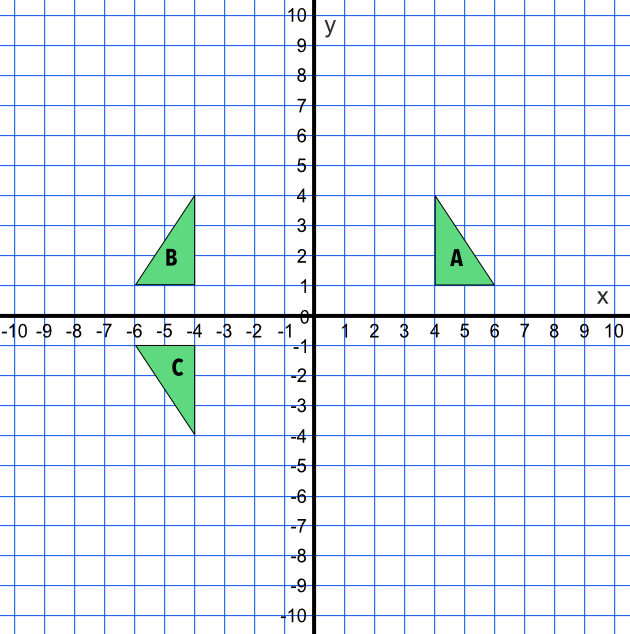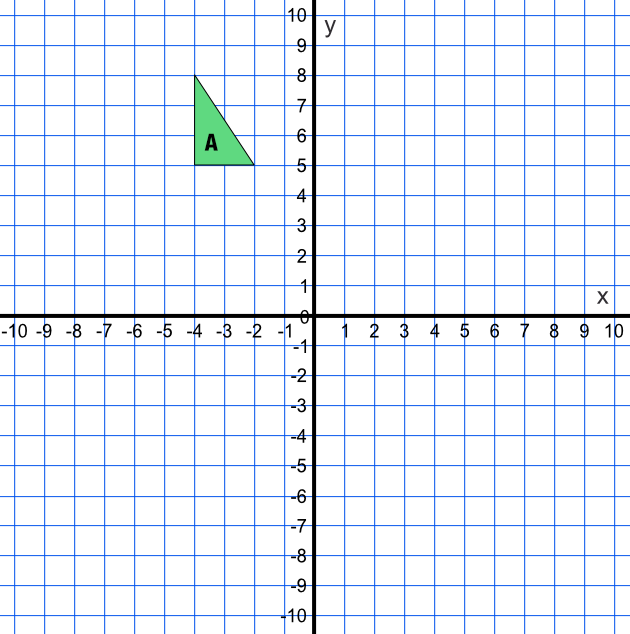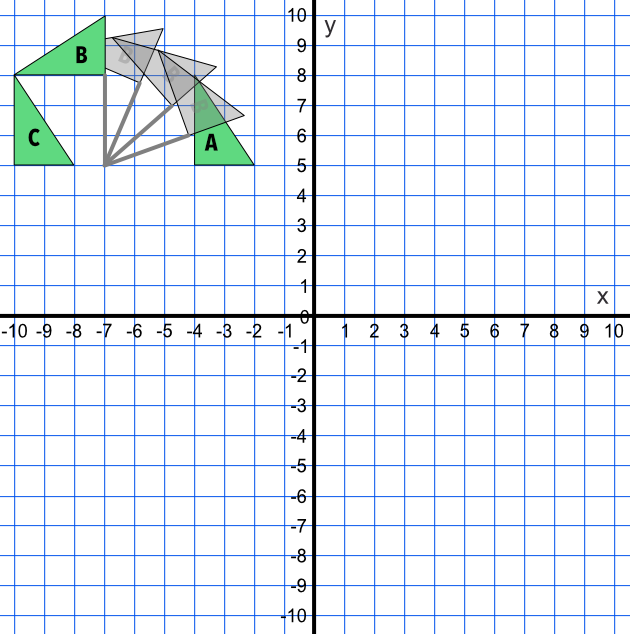One transformation can be followed by one or more further transformations.
The resultant transformation may be mappable by a single transformation.
Some transformations are readily combined: for example, a translation followed by a further translation can be replaced by a single translation (the single translation is called the resultant vector); and a reflection in one axis followed by a reflection in the other axis has the same effect as a rotation.
Shape A is reflected in `x` = 0 to map to shape B. Shape B is then reflected in `y` = 0 to map to shape C.
What single transformation would map shape A onto shape C?


Answer: A rotation of 180º around the origin
Shape A is translated using a vector of `((-6),(0))` onto shape B.
Shape B is then rotated anticlockwise by 90º.
What single transformation maps shape A onto shape C?


Answer: A rotation, anticlockwise about (-7, 5)